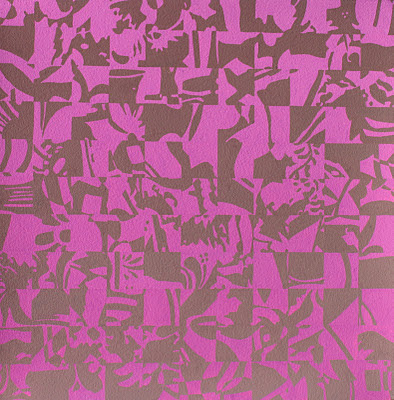
Still Life #45 24 1/2"x24 1/2" gouache on oriental paper
This still life is painted on oriental paper created by Mr Hosino, master paper maker of Japan. His paper is so beautiful and he guarantees the paper for one thousand years. One thing I like about using gouache on oriental paper, is that it seems to become one with the paper, instead of just remaining on the surface. My plan was to create the graduation as before, but "necessity is the mother of invention." I have been out of white paint, sooooooo, I drew my colors, a medium green and a medium bright red. I graduated the green with a mixture of light grey yellow-green and the red with a light orange. The color seems to create mood.







